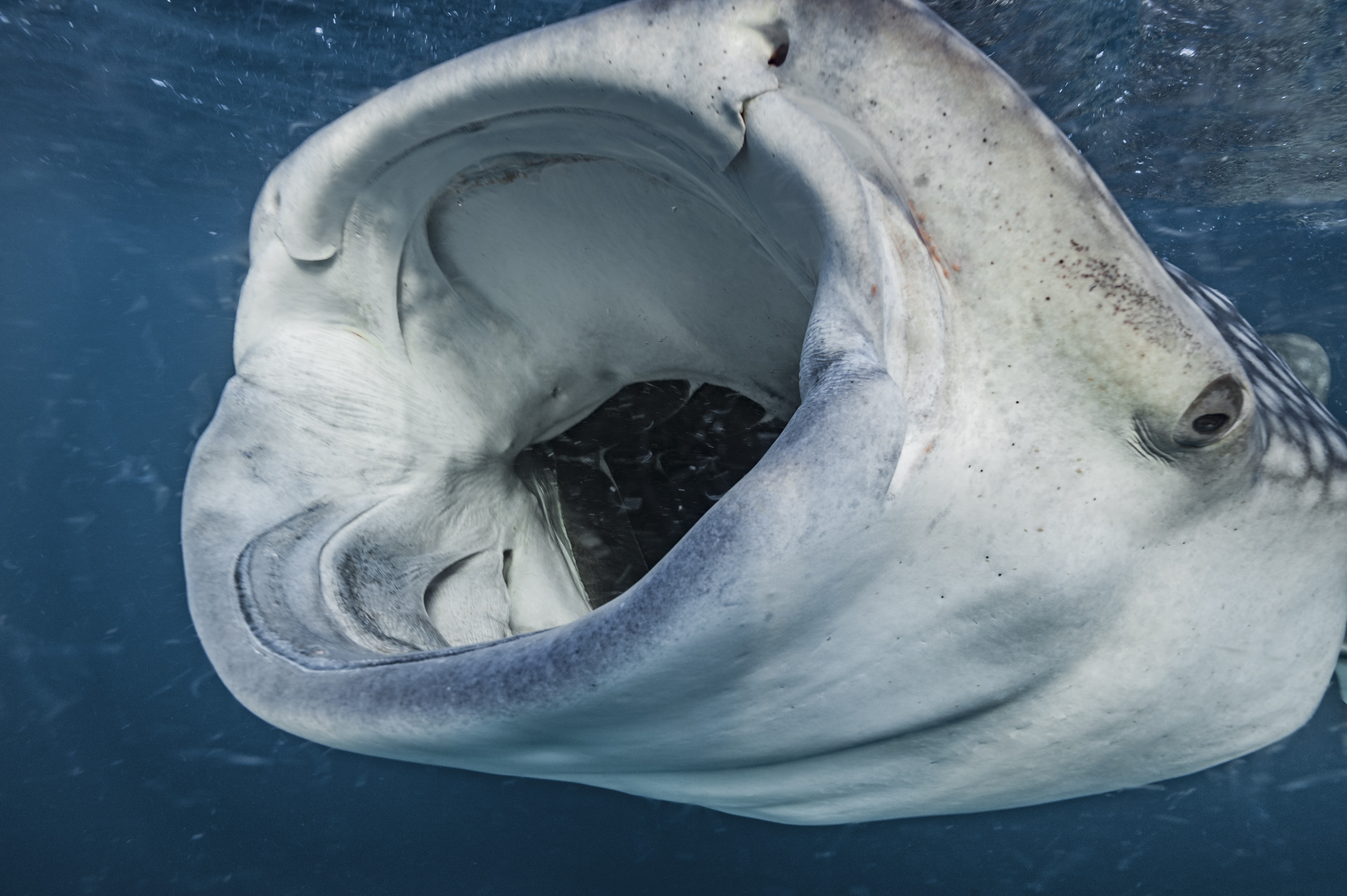
A whale shark has been filmed appearing to feed by scrounging around on the bottom of the ocean — the first time this behavior has ever been documented in this giant fish.
Whale sharks (Rhincodon typus) are the biggest species of shark on Earth, growing up to 60 feet (18 meters) long. They live in warm waters all over the world, though their population has likely decreased by more than 50% over the past 75 years. This new observation highlights how much scientists still don't know about the behavior and ecology of this threatened species.
"The fact that there's so little known about it is crazy," Joel Gayford, a shark researcher and graduate student at Imperial College London, told Live Science.
The whale shark was filmed near La Paz, Mexico, a coastal town in southern Baja California that's known as a whale shark hotspot. Some of the local guides who take tourists out to see the sharks have agreed to share videos of any unusual whale shark behaviors with a local shark research organization, Gayford said. This is how he and his colleague first got a hold of this new footage. They published a research note about the observation on May 21 in the Journal of Fish Biology.
Impressive footage!First evidence of whale #sharks feeding upon benthic prey 🦈Whitehead & @JoelGayford 2023 J Fish Biol First record of bottom-feeding behaviour in the whale shark (Rhincodon typus)https://t.co/I051olPf6w pic.twitter.com/0vMh4sTfS3May 23, 2023
The video shows the massive fish leaning over and sticking its huge jaws into the sand, appearing to vacuum up water and sediment in an effort to find food. Typically, whale sharks are filter feeders, capturing krill and other plankton either by filtering food out of the water as they swim or gulping water around the surface, Gayford said.
Related: Whale sharks are the world’s biggest omnivores, scientists discover
Based on this video alone, it's hard to know exactly what prey the whale shark might have been looking for, though Gayford speculated that it was foraging for benthic isopods, marine crustaceans that live on the ocean floor.
Although this kind of bottom-feeding behavior hasn't been documented in whale sharks before now, it isn't entirely unexpected, Mark Meekan, a marine biologist at the University of Western Australia who was not involved in the new paper, told Live Science.
The plankton eaten by whale sharks can migrate down toward the bottom of the ocean during the daytime, he said, so it stands to reason that the whale sharks would also forage at the bottom of the ocean. In fact, Meekan said some of his students have just filmed a whale shark appearing to feed in the same way.
In addition, previous studies that looked at the biochemistry of whale shark diets had suggested that these giant fish were getting some of their food from the ocean floor, Gayford noted, but no one had actually spotted any whale sharks feeding down there.
This kind of whale shark feeding behavior might be rare in the locations where people usually interact with whale sharks, Gayford speculated; maybe whale sharks are usually bottom-feeding far away from shore or deep underwater, for example. It's also possible that this behavior occurs only when there isn't enough of their usual food around and the sharks have to find another way to eat, he added.
This recent observation also points to the potential role of ecotourism in scientific discovery, Gayford noted. While there is some controversy about how shark tourism — especially shark feeding — might have ecological consequences, these tour guides are already heading out to look for sharks every day, he said.
"A rare behavior like this you may never see if you're just relying on one research organization with a few trips a week," Gayford said. "But this really increases the breadth and potential for uncovering unusual behaviors."







